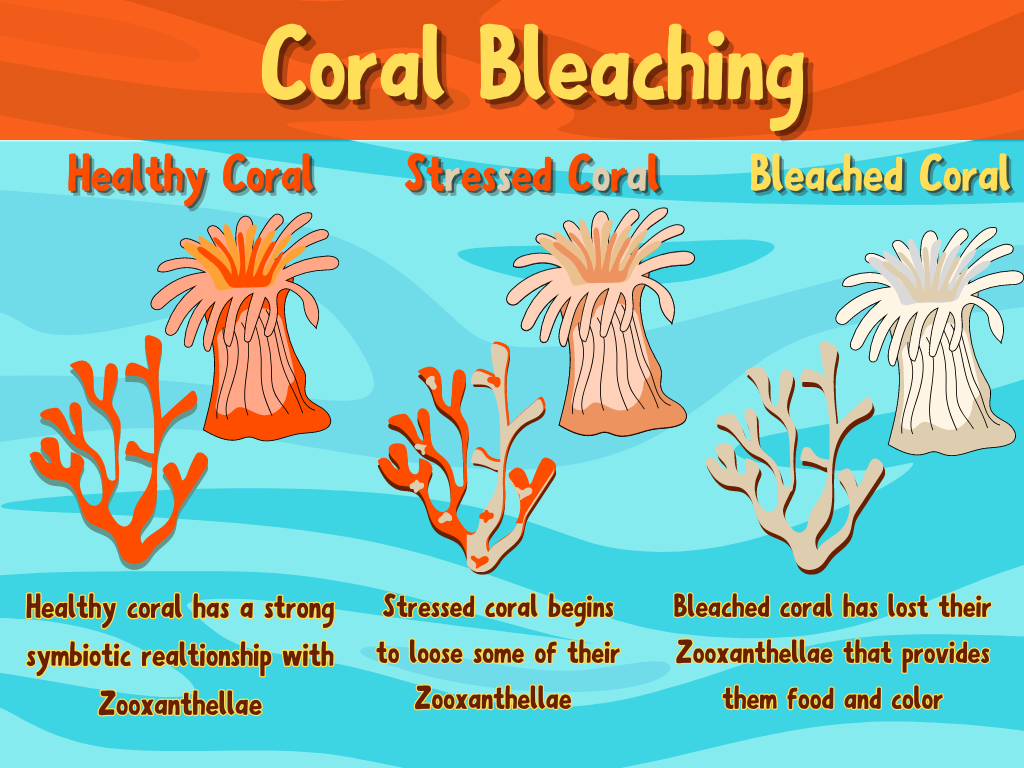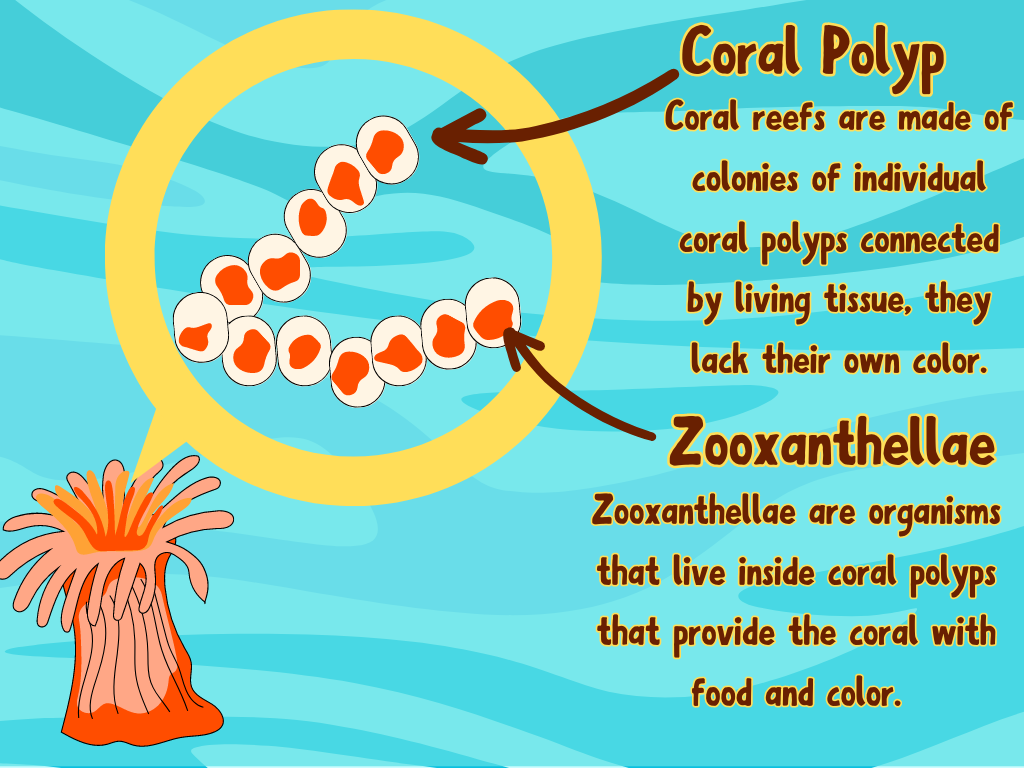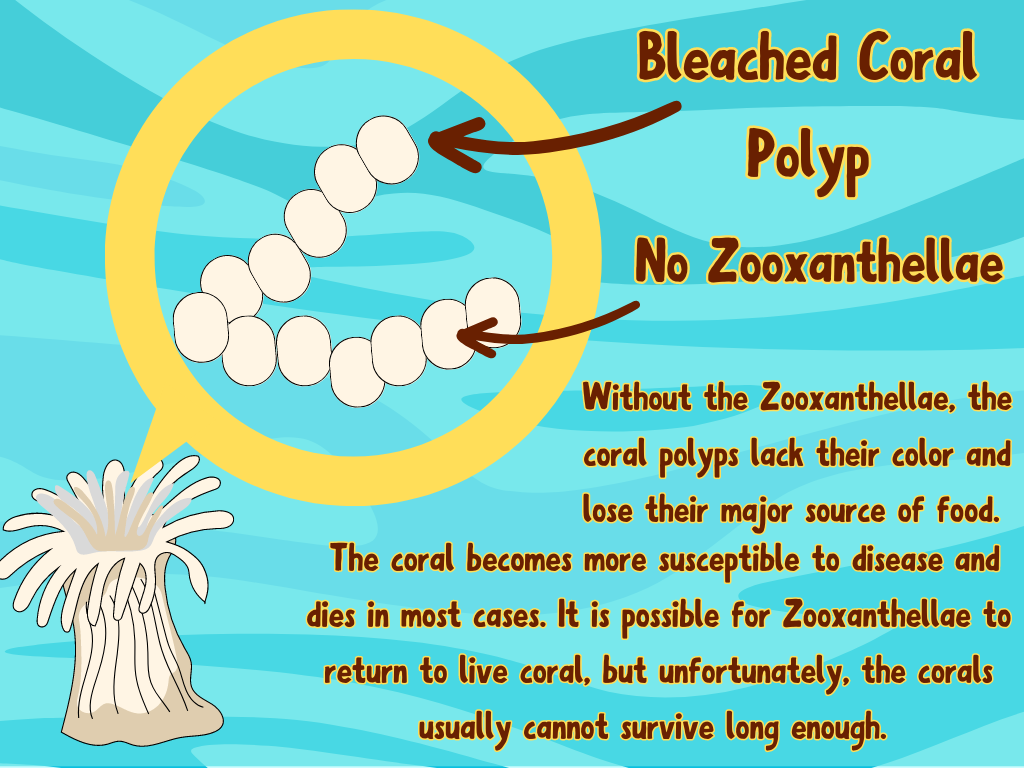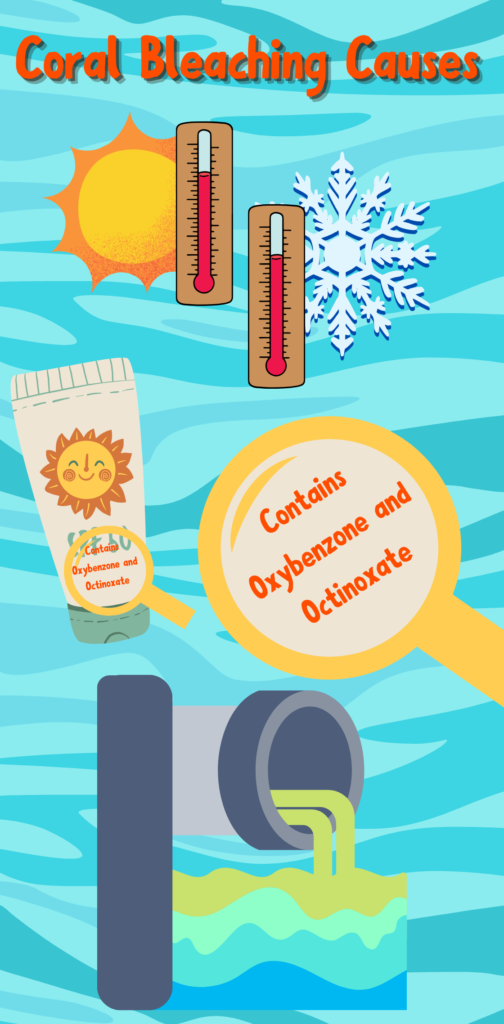
What are zooxanthellae?
To understand coral bleaching, first, we need to understand corals and their symbiotic relationship with zooxanthellae, which are photosynthetic algae-like organisms. Corals provide a home for zooxanthellae, giving them protection. Zooxanthellae return the favor by providing corals with as much as 90% of their food supply, as well as their color.

What Causes Coral Bleaching?
Coral bleaching occurs when environmental factors cause corals to expel their zooxanthellae, leaving them colorless or “bleached.” Without the zooxanthellae, the corals have not only lost their color, but they have also lost their main source of food. Without this food, corals struggle to survive, becoming more susceptible to disease, and typically die. There is a chance that zooxanthellae could return, but the corals must survive long enough for this to happen, which is unlikely in conditions that cause bleaching, to begin with.

What Causes Coral Bleaching?
Coral Bleaching is caused by a change in environmental conditions that make life unsuitable for the zooxanthellae or stress the corals, which then causes them to expel their zooxanthellae.
The most commonly spoken of cause is temperature. When temperatures get too warm or too cold, corals become stressed and expel their zooxanthellae. Now stressed and lacking a major food source, the coral struggles to survive.
Temperature is not the only cause of coral bleaching. An increase in pollutants in the water can also cause coral bleaching.
Between 6,000 and 14,000 tons of sunscreen wash off swimmers, scuba divers, and snorkelers into coral reef environments each year, making sunscreen a major potential pollutant for marine environments. Chemical sunscreens containing chemicals like oxybenzone and octinoxate are the most commonly bought and sold types of sunscreen, meaning they are the most common to wash into water. The inorganic UV filters in chemical sunscreens induce the viral lytic cycle in zooxanthellae, spreading infections through the colony and causing bleaching.
Other sources of pollutants include runoff from local cities or rural areas. Runoff is the water that picks up pollutants as it runs across the land until it is deposited into the ocean. Different pollutants, from oils, pesticides, and fertilizers, to pet waste and even trash, can all be collected in runoff and deposited into the ocean.
Lowering tides can also cause coral bleaching. As tides lower, corals become exposed to higher intensity UV rays and higher airflow, which can stress corals enough to expel their zooxanthellae. Lower tides occur naturally depending on where the coral is located or they can be caused by external environmental factors such as droughts.

Can Corals Recover from Coral Bleaching?
Yes, corals can survive from coral bleaching, but only if the stessors are reduced within a short enough time period for zooxanthalle to recover. It is evident that coral bleaching is a major risk to coral. While it takes hundreds of years to grow into the corals we see today, it can only take a short period of stress to kill them. That is why it is so important to protect corals in any way we can, including what sunscreen we use!